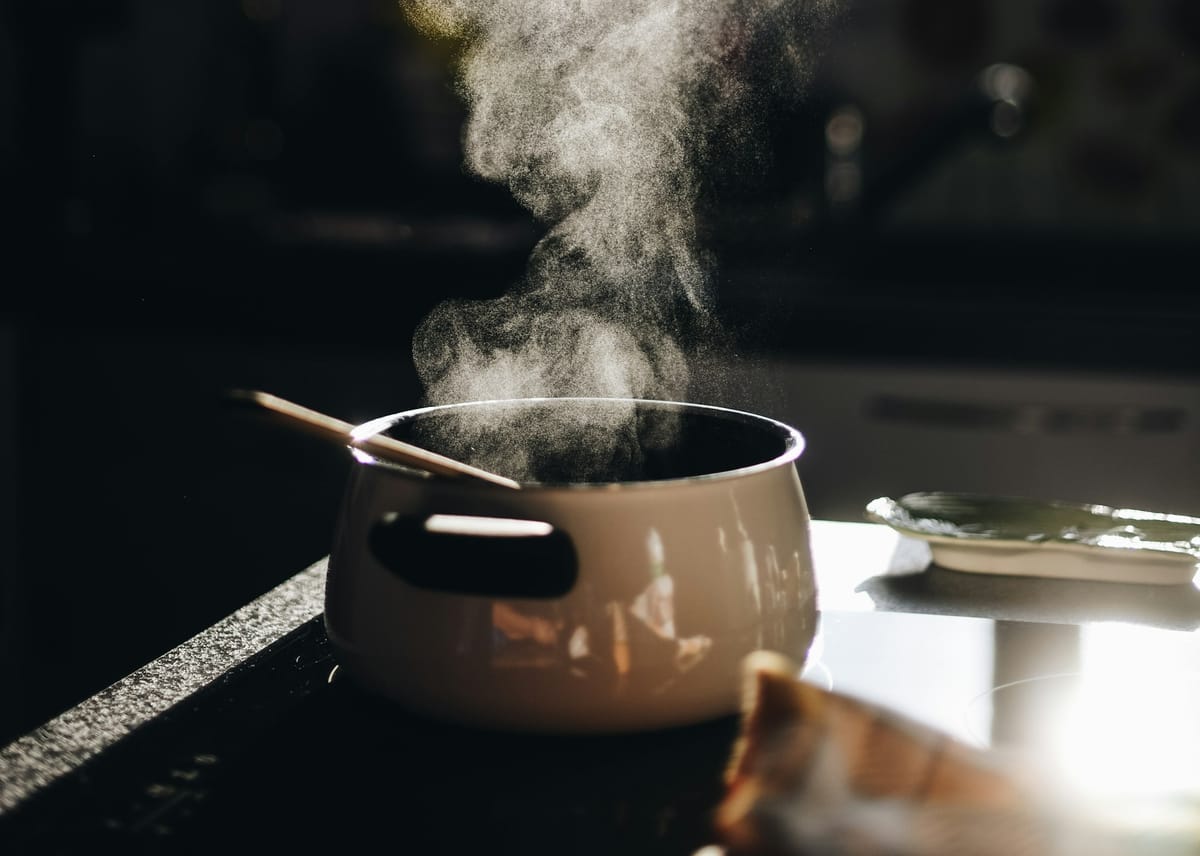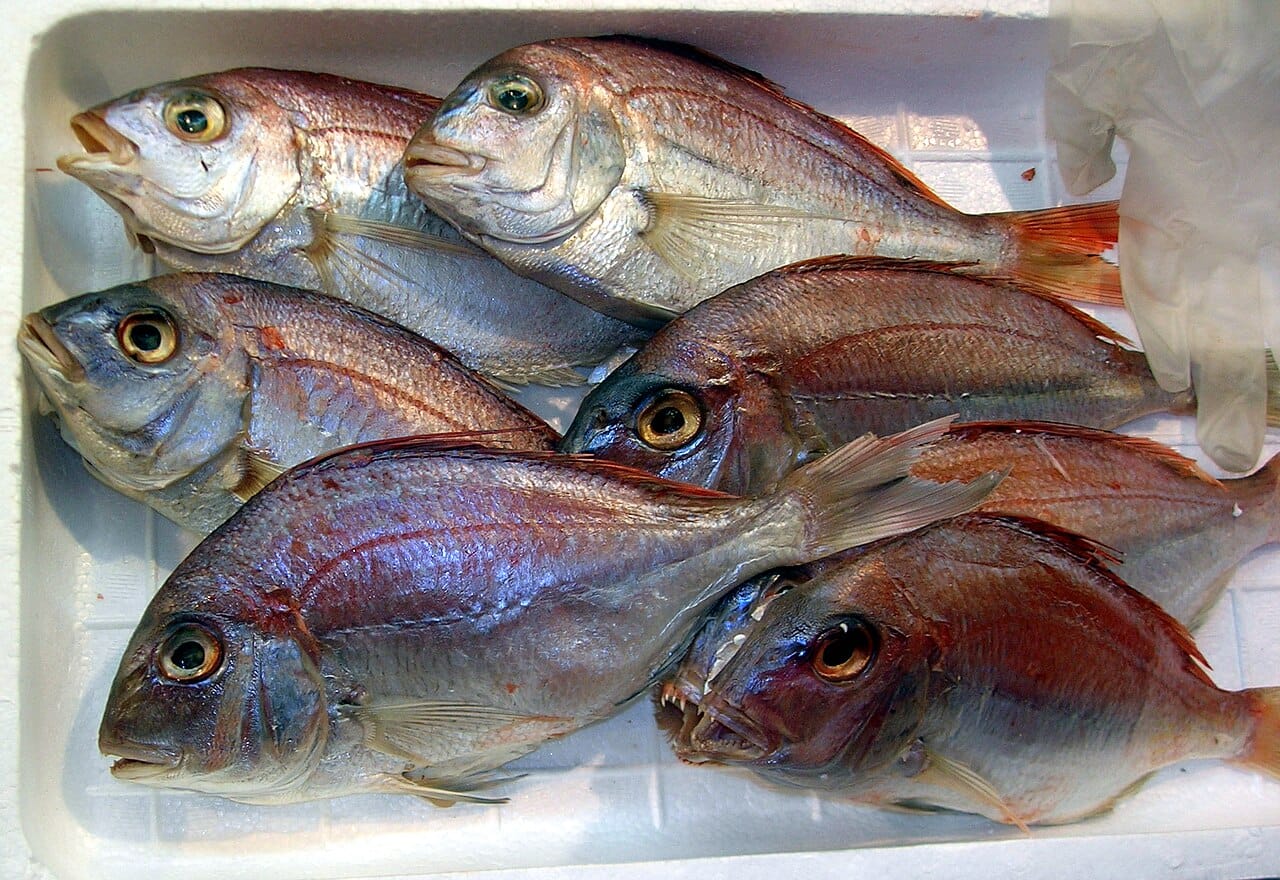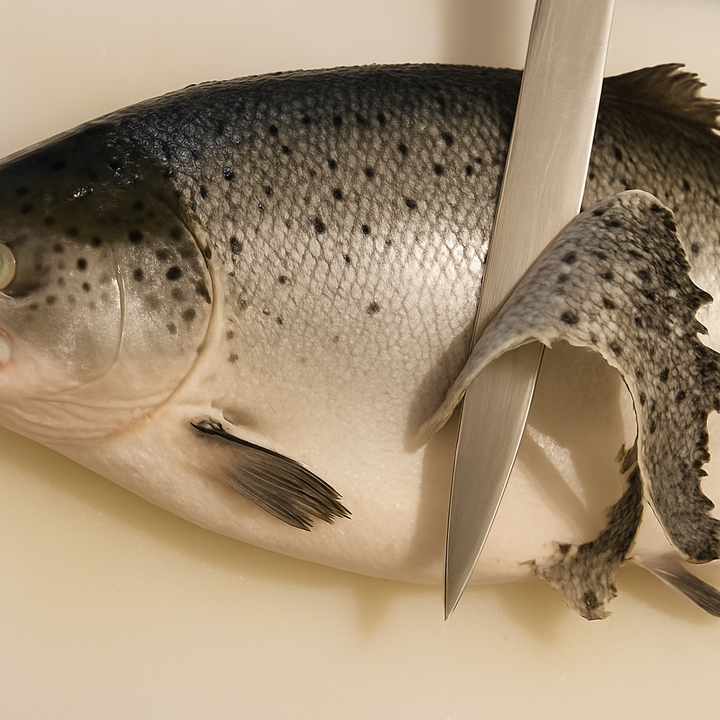Kawashimo-Zukuri: Japan's Pine Bark Fish Blanching Technique
Kawashimo-Zukuri transforms premium white fish through precise thermal shock—boiling water creates pine bark patterns on the skin, unlocking hidden umami flavors in this centuries-old Japanese technique.

In the rarified world of Japanese haute cuisine, where precision meets poetry and technique becomes art, few preparations capture the essence of culinary refinement quite like Kawashimo-Zukuri.
This ancient method of fish preparation, whose name literally translates to "skin treatment," transforms premium white fish into something extraordinary—a delicacy where the often-discarded skin becomes the star of the show.
Understanding Kawashimo-Zukuri, Blanching Technique
Kawashimo-Zukuri, also known as Matsugawa-zukuri (meaning "pine bark preparation"), is a sophisticated Japanese blanching technique that involves pouring boiling water over fish skin, followed by an immediate ice bath.
This thermal shock creates a remarkable transformation: the skin contracts and takes on a distinctive pattern reminiscent of Japanese pine bark—hence the poetic name.
But this blanching technique is far more than mere aesthetics. In the hands of a skilled chef, Kawashimo-Zukuri's precise blanching process unlocks hidden flavors and textures that would otherwise remain dormant.
The skin, which might typically be removed and discarded, becomes tender enough to eat while retaining a pleasant texture that adds complexity to each bite.
A Taste of Transformation: The Sensory Experience
When you experience properly prepared Kawashimo-Zukuri, you're tasting centuries of Japanese culinary wisdom distilled into a single bite.
The technique creates a fascinating textural contrast—the skin becomes slightly firm yet tender, with a gelatinous quality that melts on the tongue.
This transformed skin carries concentrated umami flavors, particularly in fish like madai (red sea bream), where the most intense flavors lie in the layer between the flesh and skin.

The visual impact cannot be understated. The characteristic pine bark pattern that emerges after the hot water treatment creates an almost three-dimensional appearance on the plate.
This visual poetry is fundamental to Japanese cuisine, where the eyes feast before the palate.
The flavor profile is subtle yet complex. The brief exposure to heat slightly denatures the proteins in the skin, releasing glutamates that enhance the fish's natural sweetness.
Combined with the pristine flesh beneath, each slice offers a journey from the concentrated, slightly chewy skin through to the delicate, silky interior.
Step-by-Step Blanching Preparation
Creating perfect Kawashimo-Zukuri requires precision, timing, and respect for the ingredient. Here's how master chefs execute this technique:
1. Selection and Scaling Begin with impeccably fresh fish—preferably madai, kinmedai (golden eye snapper), or suzuki (Japanese sea bass). Remove all scales meticulously, as any remaining scales will interfere with the skin's transformation.
2. Preparation Score the skin lightly in a crosshatch pattern to prevent curling and ensure even heat distribution. Place the fish fillet skin-side up on a flat strainer or slanted cutting board.
3. The Critical Moment Cover the fish with a thin, clean cloth. Bring water to a rolling boil and remove from heat. In one smooth motion, pour the hot water over the cloth-covered skin for precisely 2-3 seconds. The timing is crucial—too short and the skin won't transform; too long and you'll cook the flesh.
4. The Ice Bath Immediately transfer the fish to an ice water bath. This instant cooling halts the cooking process and causes the skin to contract, creating the signature pine bark pattern. The fish should remain in the ice bath for 15-20 seconds.
5. Final Preparation Remove the fish and pat completely dry with paper towels. Run a spoon gently against the grain to ensure no scales remain. The fish is now ready for slicing into sashimi.

Ancient Origins and Cultural Significance
The technique's origins trace back over two centuries to the Edo period (1603-1868), when refrigeration didn't exist and Japanese chefs developed numerous methods to ensure food safety while enhancing flavor.
Kawashimo-Zukuri served a dual purpose: the hot water treatment eliminated surface bacteria while transforming the skin into an edible delicacy.
This preparation method reflects core Japanese culinary philosophies—mottainai (avoiding waste) and ikasu (bringing out the best in ingredients).
By making the skin not just edible but desirable, chefs honor the whole fish and demonstrate respect for the life taken.
In traditional kaiseki cuisine, Japan's haute cuisine, Kawashimo-Zukuri often appears in the suimono (clear soup) course or as part of the sashimi presentation. Its inclusion signals the chef's technical prowess and the meal's elevated status.
The Science Behind the Technique
The magic of Kawashimo-Zukuri lies in protein denaturation and collagen transformation. When boiling water contacts the fish skin, several reactions occur simultaneously:
The collagen in the skin begins to denature and partially convert to gelatin, creating the tender, slightly sticky texture.
Meanwhile, the sudden heat causes the skin to contract rapidly, forming the characteristic pattern.
The brief heat exposure also triggers the Maillard reaction on a microscopic scale, developing subtle new flavors without visible browning.
Perhaps most importantly, the technique preserves the integrity of the flesh beneath. The cloth acts as a buffer, distributing heat evenly while preventing direct contact with boiling water.
The immediate ice bath ensures that heat doesn't penetrate beyond the skin layer.
Regional Variations and Modern Interpretations
While the basic technique remains consistent, regional variations exist throughout Japan.
In Kyoto, chefs might use dashi instead of plain water for the scalding, adding another layer of umami.
Tokyo-style preparations often feature a lighter touch, with water temperatures slightly below boiling.
Modern kaiseki chefs have begun experimenting with the technique, applying it to fish not traditionally prepared this way.
Some use flavored liquids—sake, kombu-infused water, or even tea—for the scalding process.
At Michelin-starred restaurants, you might find Kawashimo-Zukuri paired with unexpected accompaniments like yuzu kosho or specialized soy sauce blends.
Beyond Tradition: Contemporary Applications
Today's innovative chefs are pushing Kawashimo-Zukuri into new territories.
At n/naka in Los Angeles, chef Niki Nakayama incorporates Western herbs into her curing process before applying the technique, creating a fusion that maintains Japanese integrity while introducing new flavor profiles.
Some chefs have adapted the principle to other proteins—applying similar thermal shock techniques to create textural interest in everything from octopus to certain cuts of wagyu beef.
While purists might raise eyebrows, these innovations demonstrate the technique's versatility and enduring relevance.
The Ultimate Luxury Experience
For the true connoisseur, experiencing Kawashimo-Zukuri at its finest requires seeking out specialized establishments.
In Tokyo's Toyosu Market area and the remaining Tsukiji Outer Market, select sushi counters offer seasonal preparations featuring fish caught using ikejime technique—ensuring the highest quality starting material.
The most prized preparation combines Kawashimo-Zukuri with fish that have been aged using traditional Japanese aging methods.
This double transformation creates layers of flavor and texture that represent the pinnacle of sashimi craft.
Expect to pay premium prices—a single serving of properly prepared Kawashimo-Zukuri madai at a high-end establishment can cost upwards of $50.
But for those who appreciate the intersection of technique, tradition, and taste, it represents extraordinary value.
A Testament to Japanese Culinary Mastery
Kawashimo-Zukuri stands as a testament to the Japanese approach to cuisine—where every element serves a purpose, waste is minimized, and technique elevates ingredients to their highest potential.
In an age of molecular gastronomy and technological innovation, this centuries-old method remains relevant, reminding us that sometimes the most profound culinary experiences come from perfecting traditional techniques rather than inventing new ones.
For those fortunate enough to experience authentic Kawashimo-Zukuri, it offers more than a meal—it provides a window into Japanese culture, philosophy, and the relentless pursuit of perfection that defines the nation's culinary arts.
In each pine bark-patterned piece of fish lies a story of tradition, technique, and the transformation of the humble into the sublime.


